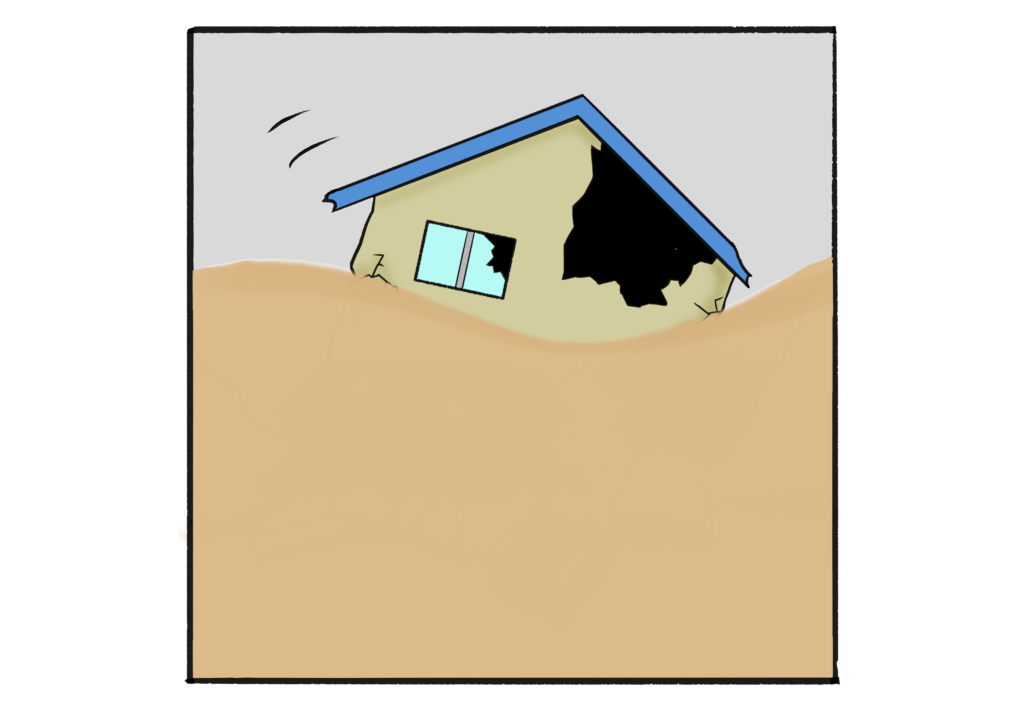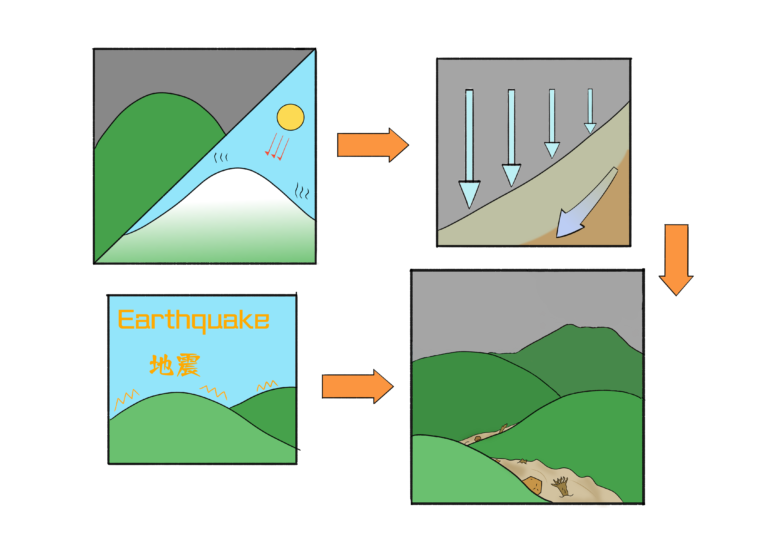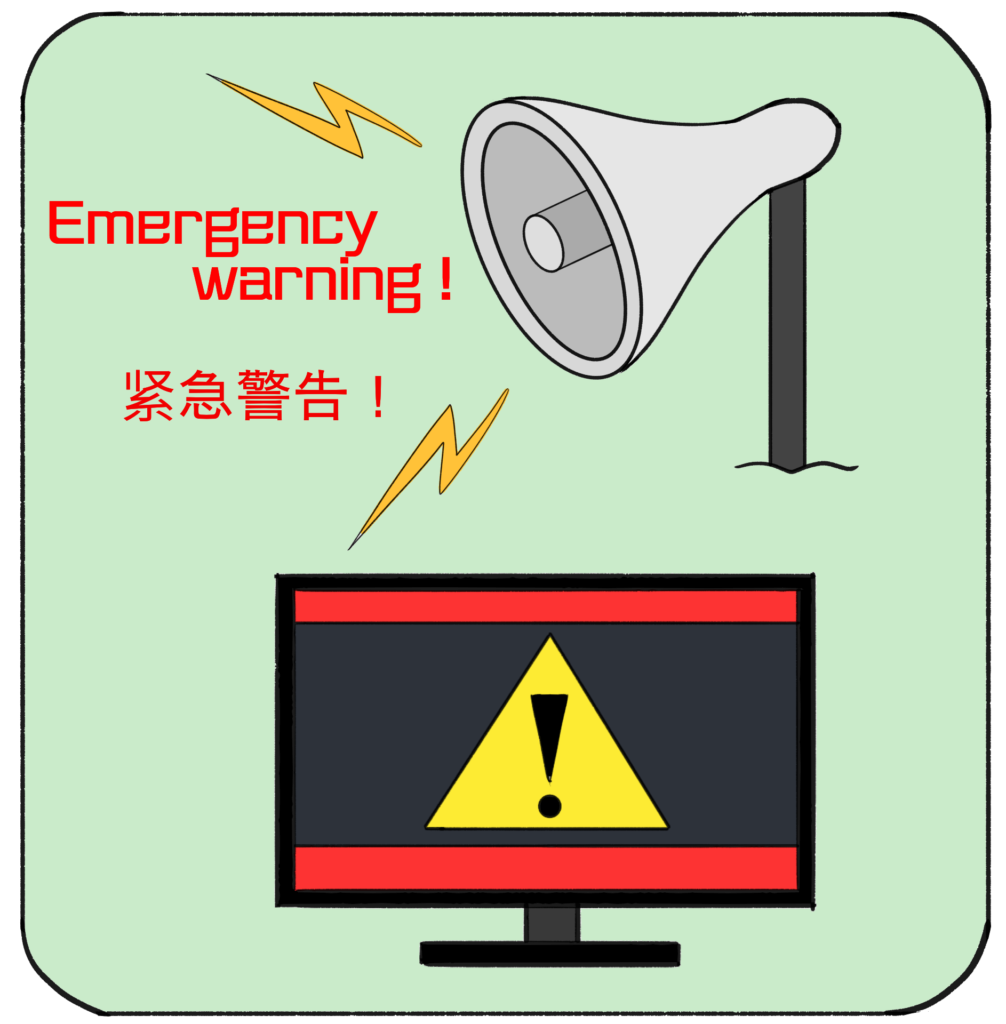
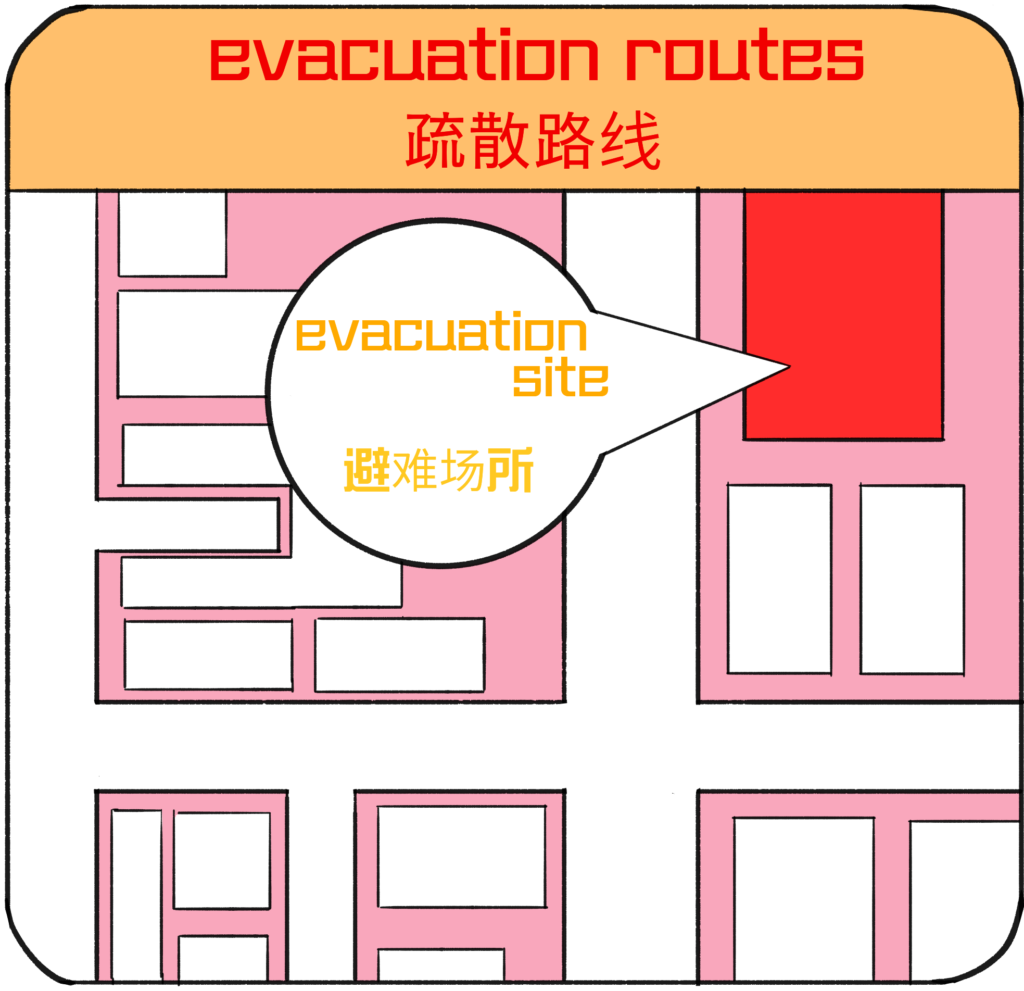
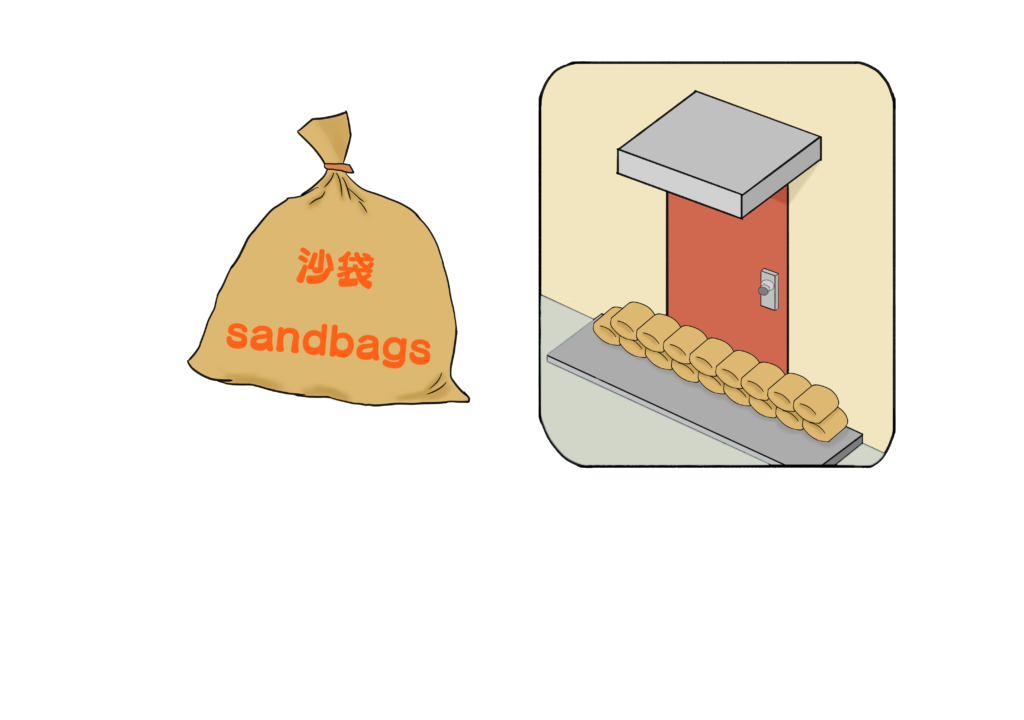
Check in advance the level of danger near your home or workplace and check with your local disaster prevention map or evacuation map.
Confirm the evacuation routes and places well in advance and record and save them on your cell phone or record note.
Prepare disaster prevention tools in advance, such as sandbags to block doorways to prevent the inflow of large amounts of water and so to reduce the extent of damage inside the house.
Keep backups of your important electronic devices data files in case of water inaccessibility.
Once an emergency warning is issued, take your prepared disaster bag and evacuate immediately to a designated place of safety.
If it is already too late to escape, go to a place above the second floor of your house and contact rescue services and wait.

